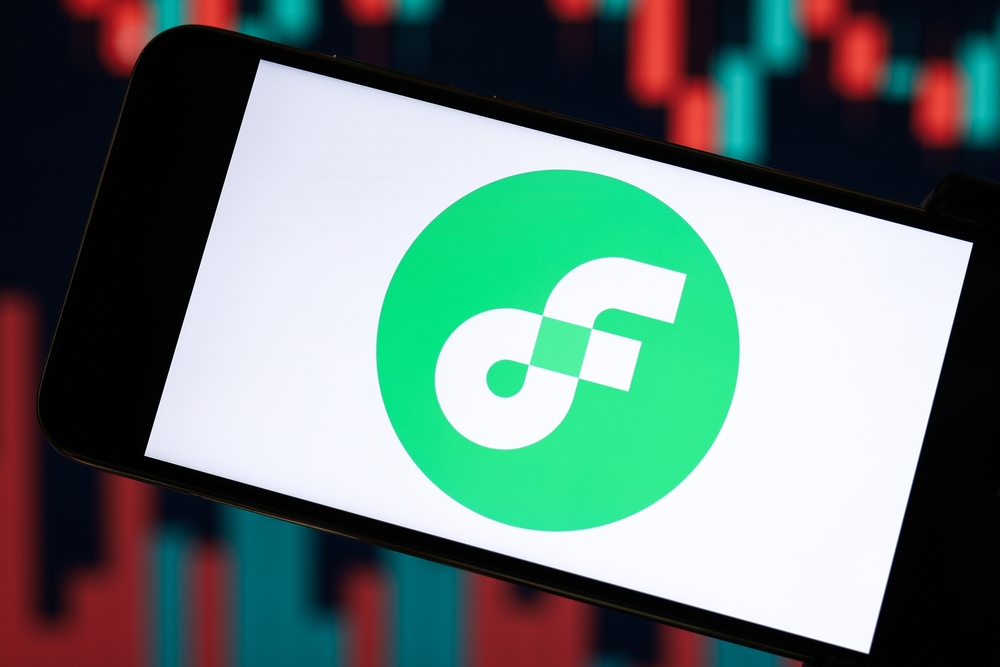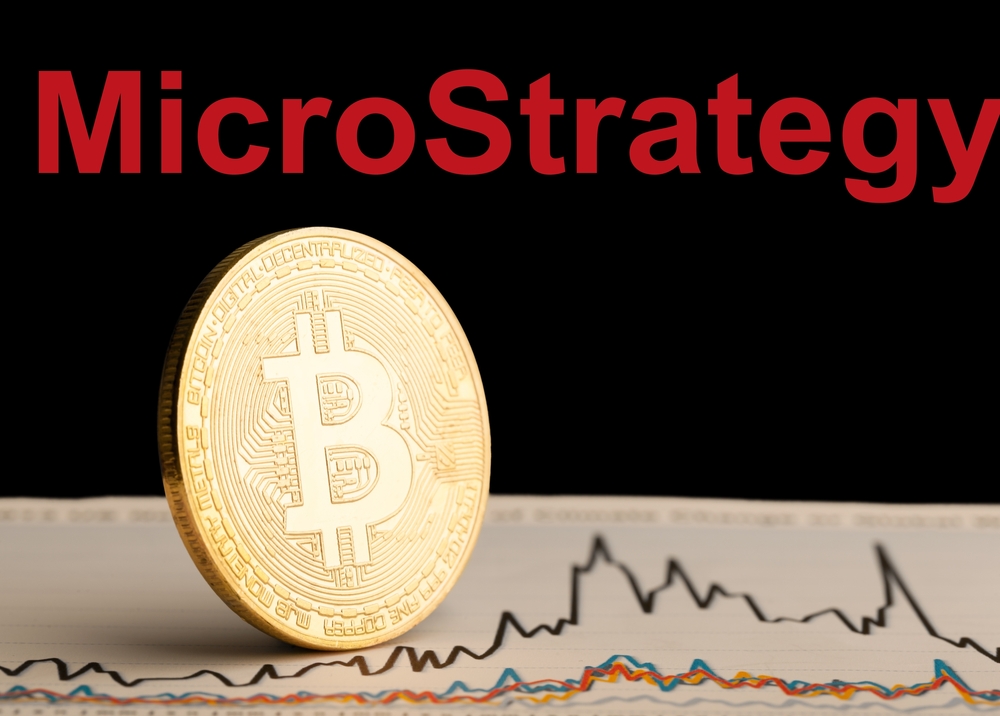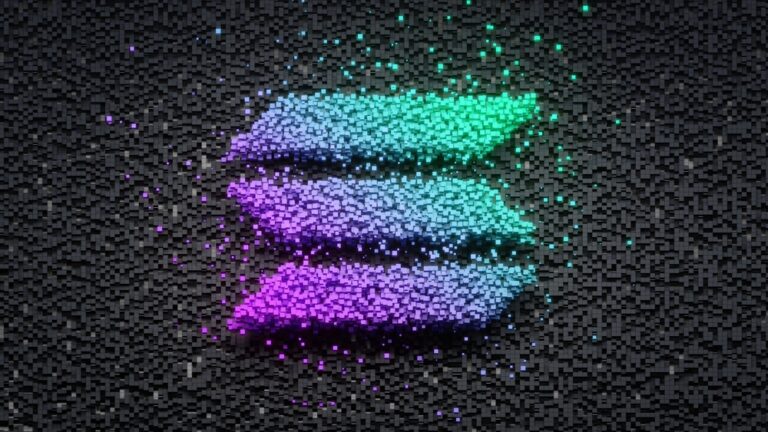Table of Contents
ToggleIntroduction
Flow is a blockchain platform designed specifically to improve digital transactions and support new types of online experiences. Created by Dapper Labs, the team behind popular applications like CryptoKitties, Flow aims to solve problems that slow down other blockchains. Flow was built from the ground up to support fast transactions and interactive experiences while maintaining the security and decentralization benefits of blockchain technology.
The Flow ecosystem focuses heavily on consumer-friendly applications, particularly in gaming, entertainment, and digital collectibles. It gained significant attention for powering NBA Top Shot, a platform where fans can buy, sell, and collect digital basketball moments. Flow makes it easier for everyday users to engage with blockchain technology without needing deep technical knowledge.
Flow’s native cryptocurrency (FLOW) serves multiple purposes within its network. It works as a payment method, allows users to participate in network governance, and provides rewards to those who help secure the network. The blockchain’s unique architecture enables it to process transactions quickly without sacrificing the decentralized nature that makes blockchain valuable.
Key Takeaways
- Flow blockchain offers faster transactions and better scalability than many other blockchains while maintaining decentralization and security.
- The platform specializes in consumer-friendly applications like games, entertainment experiences, and NFTs (non-fungible tokens).
- Flow’s architecture and native token create an ecosystem where developers can build applications and users can participate without needing extensive technical knowledge.
Understanding Flow Blockchain
Flow is a blockchain built specifically for digital collectibles and decentralized applications. It offers high performance with lower costs while maintaining decentralization, helping developers create new digital experiences.
Origins and Development
Flow was created by Dapper Labs, the same team behind the viral blockchain game CryptoKitties. When CryptoKitties became popular in 2017, it revealed serious limitations in existing blockchain technology, causing network congestion and high transaction fees.
This experience inspired Dapper Labs to develop a solution to these problems. They launched the Flow playground in 2020, allowing developers to create and trade non-fungible tokens (NFTs) while testing the new blockchain’s capabilities.
The team designed Flow specifically to support large-scale crypto games and applications that could reach mainstream users. Their goal was to build a platform that would enable new types of digital collectibles and experiences without the technical barriers found on other networks.
Flow Architecture and Design
Flow uses a multi-role architecture that separates consensus from computing. This unique design allows for significantly better performance than traditional blockchains without compromising decentralization.
The blockchain employs four different node types with specialized responsibilities:
- Collection Nodes – batch transactions
- Consensus Nodes – verify transactions
- Execution Nodes – perform computations
- Verification Nodes – check the work
This division of labor helps Flow process transactions more efficiently than single-role systems. The network can handle thousands of transactions per second, making it ideal for applications requiring high throughput like games and digital marketplaces.
FLOW token is the native currency of the network, used for staking, transaction fees, and storage fees. The blockchain is developer-friendly with Cadence, its resource-oriented programming language designed specifically for digital assets.
The Role of Cryptocurrencies
Cryptocurrencies serve as digital assets designed for secure, decentralized transactions across computer networks. They offer alternatives to traditional financial systems while providing various utilities depending on their design and purpose.
Comparison with Bitcoin and Ethereum
Bitcoin was the first cryptocurrency, launched in 2009 as a peer-to-peer electronic cash system. It primarily functions as a store of value and medium of exchange.
Ethereum expanded on BTC’s concept by introducing smart contracts, enabling developers to build decentralized applications beyond simple transactions. This innovation created an entire ecosystem of financial services and digital assets.
Flow differs from both Bitcoin and Ethereum in its technical architecture. While BTC and ETH use proof-of-work or proof-of-stake consensus mechanisms, Flow employs a multi-role architecture specifically designed for high throughput applications.
This design allows Flow to process transactions faster and more efficiently than Bitcoin, which handles about 7 transactions per second, or Ethereum, which manages roughly 15-30 transactions per second.
Flow’s Position in the Cryptocurrency Market
Flow occupies a specialized niche in the cryptocurrency market, focusing on applications requiring high performance such as games, apps, and digital collectibles.
Created by Dapper Labs (the team behind CryptoKitties), Flow was built after the team experienced Ethereum’s limitations firsthand when their application clogged the network. This real-world problem shaped Flow’s development priorities.
Flow’s market position is strengthened by partnerships with major brands and organizations including the NBA (NBA Top Shot), UFC, and Dr. Seuss. These collaborations have helped Flow establish credibility in the mainstream market.
Unlike many cryptocurrencies that struggle with adoption, Flow has attracted millions of users through its consumer-friendly applications. Its focus on user experience and scalability positions it differently from purely financial cryptocurrencies like Bitcoin or general-purpose blockchain platforms like Ethereum.
Flow’s Ecosystem
Flow blockchain has built a diverse ecosystem that connects major brands with everyday users through blockchain applications. The platform focuses on creating user-friendly experiences while maintaining the decentralized benefits of blockchain technology.
Key Partnerships and Collaborations
Flow has established impressive partnerships with major global brands that have helped drive adoption. NBA Top Shot, created by Dapper Labs on the Flow blockchain, revolutionized sports collectibles by allowing fans to own memorable basketball moments as NFTs. This partnership with the NBA demonstrated Flow’s ability to handle high-volume transactions.
Warner Music Group has also joined the Flow ecosystem, exploring new ways for artists to connect with fans through blockchain technology. These music industry applications showcase Flow’s versatility beyond gaming.
Samsung has integrated with Flow to expand blockchain accessibility to their massive user base. This collaboration helps bring blockchain technology to mainstream consumers who might otherwise find crypto too complex.
Consumer Applications
Flow blockchain was specifically designed for NFTs and gaming, offering the scalability needed to support millions of users simultaneously. This makes it ideal for consumer-facing applications where smooth performance is crucial.
The ecosystem includes numerous decentralized applications focused on creating interactive experiences. Gaming represents a significant portion of Flow’s ecosystem, with developers attracted to its fast transaction speeds and low fees.
Flow stands out by prioritizing user experience. Most applications built on Flow hide blockchain complexity behind simple interfaces. This approach has made Flow popular among developers looking to create consumer applications without technical barriers.
Flow’s tools allow creators to build applications where users can easily purchase, trade, and interact with digital assets in a developer-friendly environment.
DeFi on Flow
Flow blockchain offers robust infrastructure for decentralized finance applications with notable throughput capabilities and reduced transaction costs. The platform enables various financial services without traditional intermediaries while maintaining security and accessibility.
Exploring Decentralized Finance
Decentralized Finance (DeFi) on Flow represents a new financial ecosystem where users can access services without banks or brokers. The Flow blockchain provides an environment where DeFi protocols can operate efficiently with higher transaction speeds.
Key DeFi capabilities on Flow include:
- Lending and borrowing protocols
- Decentralized exchanges with minimal slippage
- Yield farming opportunities for passive income
- Smart contract-based financial instruments
Flow’s architecture makes it particularly suited for DeFi applications due to its multi-node design. This structure allows different validators to handle specific tasks, improving overall efficiency and user experience.
Developers appreciate Flow’s resources-oriented programming language Cadence, which provides built-in security features for financial applications.
Stablecoins and Tokenization
Flow blockchain supports various stablecoins, with USDC being one of the most prominent. These price-stable digital assets serve as critical building blocks for DeFi activities on the network.
Tokenization benefits on Flow:
- Asset representation through blockchain tokens
- Fractional ownership of high-value assets
- Improved liquidity for traditionally illiquid assets
- Programmable compliance features
USDC on Flow enables users to maintain dollar-pegged value while interacting with DeFi protocols. This stability is essential for activities like trading, lending, and settlement.
The tokenization process on Flow is streamlined through Cadence, allowing developers to create secure, compliant tokens representing real-world assets. This capability has attracted projects focused on tokenizing everything from art to real estate.
NFTs and Digital Collectibles
Flow blockchain has become a major platform for NFTs and digital collectibles due to its scalable architecture and user-friendly approach. The network offers unique advantages for creators, collectors, and developers in the digital asset space.
NFT Marketplace Dynamics
The NFT marketplace on Flow is thriving with various platforms supporting the creation and exchange of unique cryptographic tokens. These tokens represent ownership of digital or physical items in a way that cannot be replicated. Flow’s architecture allows for smoother transactions, making NFT trading more accessible to mainstream users.
Flow’s most notable marketplace success comes through partnerships with major brands and sports leagues. These collaborations have introduced millions of new users to blockchain collectibles through familiar entertainment franchises.
Transaction costs on Flow remain lower than many competing chains, removing a significant barrier for new collectors. The platform also supports secondary sales markets, allowing creators to receive royalties from future trades of their work.
Unique Offerings of Flow
Flow stands out as a high-performance blockchain specifically designed for NFTs and gaming. Its multi-node architecture separates consensus, computation, and validation tasks, enabling greater throughput without sacrificing security.
Creators on Flow benefit from tools that make minting and distributing NFTs simpler. The platform provides robust developer resources that support complex digital assets with interactive features and programmable functionality.
Instagram has partnered with Flow to enable creators to make and sell digital collectibles directly on the platform. This integration exposes Flow’s technology to billions of potential users.
Flow also pioneers cross-chain NFT compatibility, working toward a future where digital assets can move between different blockchain ecosystems. This innovation addresses the fragmentation issue in the current NFT landscape.
Smart Contracts and Cadence
Smart contracts on Flow blockchain use Cadence, a specialized programming language designed to create secure and efficient decentralized applications. Cadence focuses on resource-oriented programming to better handle digital assets.
Programming on Flow
Cadence was built specifically for the Flow blockchain, making it easier for developers to create reliable smart contracts. Unlike other blockchain programming languages, Cadence treats digital assets as resources that cannot be copied or lost.
The language has clear syntax that helps developers avoid common errors. This design choice makes Flow smart contracts more predictable and easier to audit.
Developers can build various applications on Flow including:
- Games and collectibles
- Decentralized finance (DeFi) apps
- Social media platforms
- Digital identity solutions
Flow’s development portal provides comprehensive documentation to help new developers get started quickly.
Security and Efficiency
Cadence prioritizes security through its resource-oriented approach. Digital assets in Cadence are represented as resources that must be tracked by the compiler, preventing duplicates or accidental deletion.
This resource model directly maps to real-world assets like money or collectibles. When you transfer an asset on Flow, it moves completely to the new owner – just like handing someone a physical object.
Flow blockchain achieves high scalability without sharding, making transactions faster and cheaper than many other blockchain platforms.
Flow’s architecture separates consensus from computation, allowing smart contracts to run more efficiently. This design helps developers create responsive applications that can handle more users.
The beginner-friendly design of Cadence makes it accessible to new blockchain developers while maintaining the power needed for complex applications.
Flow’s Native Token Economy
The FLOW token serves as the backbone of the Flow blockchain ecosystem, powering transactions, rewarding network participants, and enabling key functionality. This native cryptocurrency plays multiple critical roles within the platform’s economic structure.
Utility and Governance
FLOW is the native currency of the Flow network, essential for several core functions. It serves as the exclusive token for staking, allowing validators to participate in securing the network and earning rewards. Users must also use FLOW for paying transaction fees when executing smart contracts or transferring assets on the blockchain.
The token enables payment of storage fees for maintaining data on the network, a crucial aspect for developers building decentralized applications. This fee structure helps prevent network congestion and ensures efficient resource allocation.
Developers working with Flow’s tools can utilize FLOW tokens to access the Flow playground, an environment that facilitates the creation and trading of non-fungible tokens (NFTs) and other digital assets.
Investment Perspectives
From an investment standpoint, FLOW represents exposure to a blockchain specifically designed for mainstream adoption and scalability. The token’s value is tied to network growth and adoption of applications built on Flow.
As a reward system for users contributing to network security, FLOW creates an economic incentive that aligns participant interests with the health of the ecosystem. This structure promotes long-term investment in the platform’s success.
FLOW’s tokenomics model focuses on sustainable distribution. The FLOW coin serves as a means of rewarding staked participants, creating a circular economy where network security directly benefits token holders.
Investors should note that FLOW is primarily used for gas fees and staking, making its value proposition different from purely speculative cryptocurrencies.
Engaging with Flow
Getting started with Flow blockchain requires setting up a wallet and understanding how to participate in the network. These steps allow users to access the full potential of this decentralized platform designed for fast digital transactions and NFT capabilities.
Creating a Wallet
Flow blockchain offers several wallet options for users looking to store and manage their FLOW tokens. The most popular choices include Blocto, Lilico, and Dapper Wallet. Each wallet provides different features while maintaining security and ease of use.
To create a wallet:
- Choose a wallet provider compatible with Flow
- Download the application or browser extension
- Follow the setup instructions to create a new account
- Securely store your recovery phrase or private keys
- Fund your wallet with FLOW tokens from an exchange
Most Flow wallets support NFT viewing and management, which is important since the platform has become known for its NFT capabilities. Users should verify that their chosen wallet supports all the features they need before committing.
Participating in the Network
There are multiple ways to engage with the Flow network, beyond simply holding tokens. Users can stake FLOW tokens to help secure the network and earn rewards in return. Delegation is also possible for those who don’t want to run nodes themselves.
Participation options include:
- Staking: Lock up FLOW tokens to support network security
- Delegation: Assign your tokens to node operators
- Trading NFTs: Buy and sell digital collectibles on Flow marketplaces
- Using dApps: Engage with decentralized applications built on Flow
The Flow playground provides developers with tools to create and test applications. Even non-technical users can benefit from the growing ecosystem of Flow-based services and marketplaces.
Transaction fees on the network are paid in FLOW tokens, so maintaining a balance is necessary for anyone actively using the blockchain. The network’s focus on user experience makes it more accessible than many competing blockchains.
Web3 and the Future of Flow
Flow blockchain stands at the forefront of Web3 development, creating a foundation for next-generation digital experiences. The platform’s unique architecture allows it to address key challenges while maintaining its focus on consumer accessibility and developer-friendly features.
Flow’s Vision for Web3
Flow positions itself as the home of consumer Web3, emphasizing accessibility and trust. The platform was specifically designed to overcome the limitations of earlier blockchains, particularly for supporting NFTs, gaming, and consumer applications.
Flow’s vision centers on creating a decentralized platform that anyone can access and everyone can trust. This approach removes traditional barriers to blockchain adoption.
The team behind Flow aims to make Web3 technology practical for everyday users. They focus on user experience rather than requiring deep technical knowledge.
Flow has established itself as a place where culture meets Web3, bridging the gap between digital innovation and mainstream adoption. This cultural integration helps Flow appeal to creators, brands, and consumers alike.
Upcoming Innovations and Updates
Flow continues to evolve with several key innovations planned for its ecosystem. The blockchain is positioning itself as the future backbone of Web3 and the open metaverse through ongoing development.
The platform’s multi-role architecture distinguishes it from competitors, allowing for specialized node functions that enhance efficiency and scalability. This technical foundation supports future growth without compromising performance.
Flow’s roadmap includes expanding its NFT and gaming capabilities. As a high-performance blockchain specifically for creating NFTs and massive crypto games, Flow continues to refine tools for creators and developers.
Upcoming protocol updates aim to increase transaction speeds while maintaining security. These improvements will support larger user bases as adoption grows.
Frequently Asked Questions
Flow blockchain has generated significant interest in the crypto community due to its unique features and applications. These common questions address key aspects of Flow’s technology, investment potential, and ecosystem resources.
What distinguishes Flow blockchain from other blockchain platforms?
Flow blockchain stands out with its multi-role architecture that improves scalability without sharding. This design allows for better performance when running complex applications like games and NFT marketplaces.
Unlike traditional blockchains, Flow uses a unique separation of consensus and computation. This approach enables fast transaction processing while maintaining security and decentralization.
Flow was specifically designed for NFT-based applications and games, setting it apart from general-purpose blockchains. Its developer-friendly environment includes Cadence, a resource-oriented programming language that makes building secure smart contracts easier.
What are experts predicting for the future price of FLOW coin?
Analyst predictions for FLOW vary based on adoption rates of the platform and overall market conditions. Most forecasts suggest moderate growth potential tied to increased usage of Flow-based applications.
Price predictions often consider Flow’s partnerships with major brands and entertainment companies. These collaborations could drive mainstream adoption and potentially increase demand for the token.
Experts note that FLOW’s price tends to correlate with activity in the NFT market and blockchain gaming sectors. As these industries evolve, they may significantly impact FLOW’s valuation.
What are the key factors to consider when evaluating FLOW as a potential investment?
FLOW serves as the native currency of the Flow network, used for staking, delegating, paying transaction fees, and storage fees. This utility creates fundamental demand for the token within the ecosystem.
The adoption rate of applications built on Flow directly impacts token value. Projects like NBA Top Shot demonstrate the platform’s potential for mainstream adoption.
Investor assessment should include the strength of Flow’s developer community and ongoing platform improvements. The blockchain’s scalability solutions and user experience focus may provide competitive advantages.
Where can the latest news and updates on Flow cryptocurrency be found?
Official Flow channels provide the most reliable updates, including their website, blog, and social media accounts. These sources announce partnerships, technical upgrades, and ecosystem developments.
Cryptocurrency news sites and specialized publications regularly cover significant Flow developments. These outlets often analyze how updates might affect the broader crypto market.
Community forums and discussion groups offer grassroots insights about Flow’s ecosystem. These spaces feature user experiences and practical applications of the technology.
What capabilities does the Flow blockchain explorer provide to users?
The Flow blockchain explorer allows users to track transactions, view block details, and monitor network activity in real-time. This transparency tool helps users verify transactions and understand network performance.
Users can search for specific accounts, smart contracts, and NFTs within the explorer. This functionality makes it easier to track digital assets and their movement across the network.
The explorer provides valuable data for developers debugging applications and users confirming transaction status. Technical metrics about the blockchain’s performance are also accessible.
Who are the primary developers or organizations responsible for the creation of Flow blockchain?
Flow was created by Dapper Labs, the same team that developed the popular Ethereum-based game CryptoKitties. Their experience with blockchain gaming directly influenced Flow’s architecture.
The development team designed Flow after experiencing Ethereum’s limitations during CryptoKitties’ peak popularity. This practical experience shaped their approach to scalability challenges.
Dapper Labs continues to lead Flow’s development while building a broader ecosystem of partners and developers. Their strategy focuses on creating a blockchain specifically optimized for games and digital collectibles.











